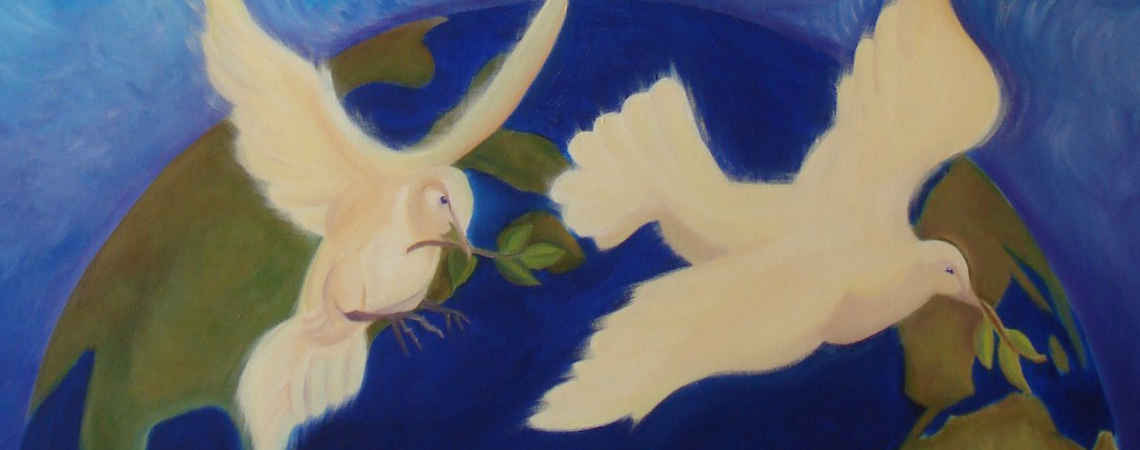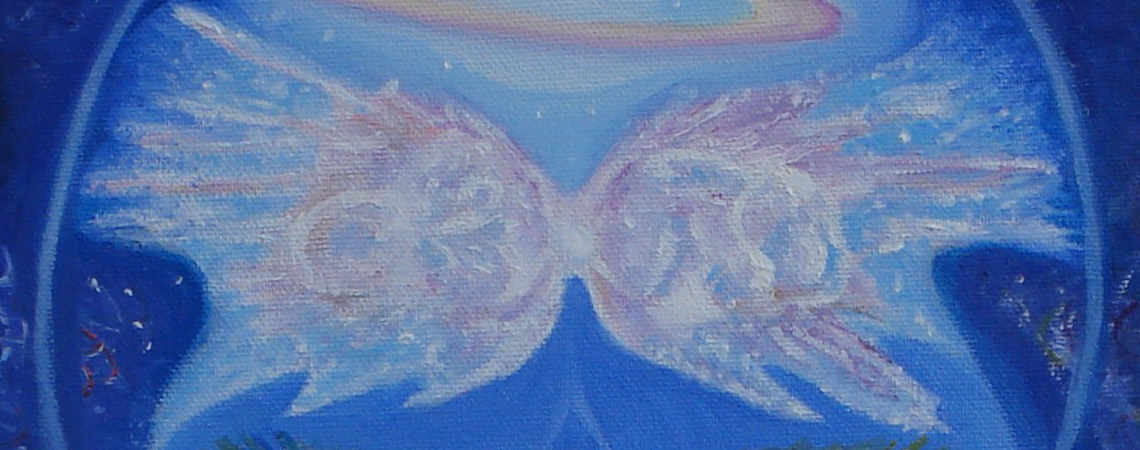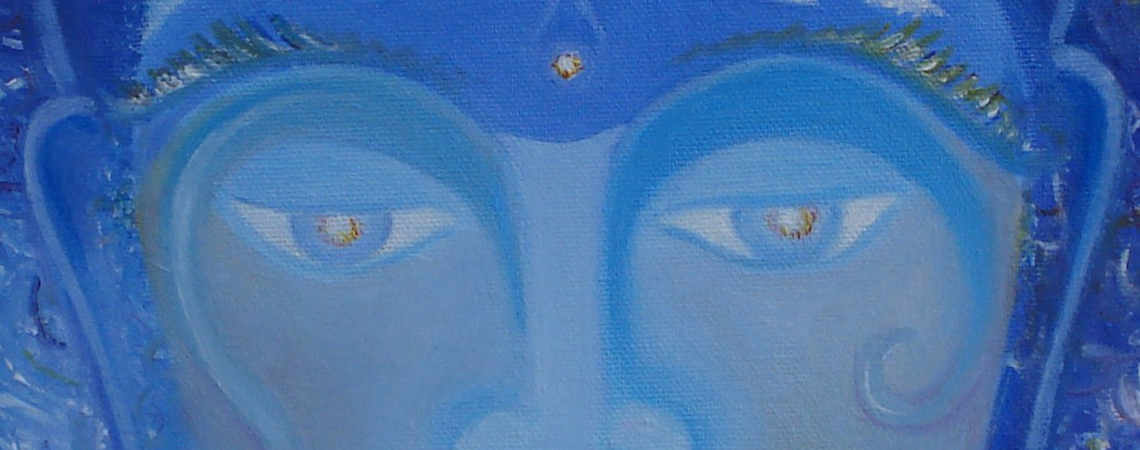The following is a presentation I gave at the Ideas Conference in Kingston Ontario focusing on yoga and mindful techniques teachers can use in the classroom.
“Teaching Peace”
Yoga & Drama Strategies for the Classroom
Facilitated by Anita Mitra
Studies have shown that a regular regime of yoga improves:
- student’s attitude toward themselves
- behaviour toward others
- physical health
- ability to deal with stress
- academic performance
Program Evaluation and Research Collaborative (PERC) 2003’ <www.calstatela.edu/academic/ccoe/c_perc/c_perc>
The following package includes:
- scripted centering exercises and warm-ups to relax your class, help them focus or wake them up
- a drama lesson that explores conflict resolution
- drama warm ups
RELAXATION AND VISUALIZATION EXERCISE SENSORY JOURNEY (15 minutes)
It is important that you use a slow pace when offering a relaxation exercise. Always use a gentle and clear voice. Soft music or nature music is helpful to set the tone. Dim the lights. To prepare the participants let them know that this experience is meant to be a relaxing and safe, so it is important that everyone is totally quiet and that means to leave their neighbour alone so that they have a positive journey.
| Lie down on your back or sit in a chair.Tuck you chin slightly. Rest your hands on your belly. If you are lying down and your lower back is sore bend your knees.Drop inside by softening your gaze or if you feel comfortable close your eyes.
Begin listening to your breath. Feel the breath moving in and out of your nose. Feel it relaxing you. (pause) Feel the rise and fall of your chest. Feel yourself relaxing further still. (pause) Feel the rise and fall of your belly. Begin to deepen your breath. Breathe in slowly and fill your belly, then fill your lower chest and then your upper chest. Now exhale slowly relaxing your upper chest, lower chest and relaxing your belly pressing your belly button towards your spine. Repeat this at your own pace 3 times. With each exhalation feel your body softening into the floor. With each inhalation feel your mind clearing. Feel yourself letting go. |
Bring your attention to the sounds in the space. Just listen and let the sounds pass right through you.Bring your attention to the light dancing in your eyes. Breathe the light in and out.Become aware of your body lying on the floor.
Feel your head touching the floor (or resting on the top of your torso). Feel your shoulders touching the floor. Feel your arms or elbows touching the floor (or chair). Feel you upper back touching the floor. Feel your lower back touching the floor. Feel your legs touching the floor. Feel your hands touching your belly. Feel you heels touching the floor. Feel your whole body touching the floor. Feel your breath deepening. Listen to the sound of your breath (pause). Imagine each breath you take is like a wave of the ocean washing right over your.
|
You can take any part of this journey and create a mini relaxation.
| Begin playing waterfall music Drop deeper inside and imagine yourself standing in a beautiful forest with a water fall in the distance. Notice nature around you; the sounds of the water rushing; the fresh smell of plants and flowers. See the blue sky above you. Feel a soft breeze against your skin (pause).
Begin walking towards the waterfall. Feel the ground beneath you. Notice the rocks, leaves, earth. Feel the water spraying you lightly as you move closer. Begin to walk along the rocks be careful not to slip. Take your time. Notice everything (pause). Notice something special in the water. Become curious and carefully reach inside the water and dig into the soil trying to pull it up. Feel the coolness of the water against your skin. Feel the mud on your fingers. Pull it up out of the water have a close look at it. Examine it all over. Notice texture, smell, colour, shape (pause). Gently place it back in the water. Begin to walk back to where you started. Take your time. Feel peaceful and refreshed. Feel your mind relaxed.
|
And slowly close the picture and sensation of the waterfall inside your mind. Know that you can visit there again any time.
Feel yourself back on the floor. Feel the coolness of the air, and sounds in the room, your body on the floor (pause).
Begin to wiggle your fingers and your toes. Stretch your arms up and over head and stretch your body, tighten all of your muscles. And then relax like Jell-O (repeat).
Breathe in and let out a big sigh.
And slowly come to a sitting position.
(Have a discussion about the experience, what did they see and what did they find)
|
Simple Centering Exercise (dim lights):
During any of these exercises remind the participants to breathe deeply often. People tend to think too much and breathe shallowly or hold their breath.
GOLDEN BALL CENTERING:
From a sitting position place your hands on your knees, sit up in your chair, place your feet firmly on the floor. Uncross your legs. Soften your gaze or if you feel comfortable close your eyes.
Connect with your breath and let go of anything you were doing a minute ago. This is your time for you. Take some nice slow deep breaths (pause). Bring your awareness to the top of your head and relax your face, your jaw, and your tongue. Tuck you chin a little, lift your body up out of the hips.
Take a deep breath in and squeeze your shoulders up to your ears. Squeeze all the tension out and then relax your shoulders, Exhale let out a big long sigh. (Repeat once or twice).
Imagine a golden ball of light hovering over your left foot. Feel that light move up your leg and hover over your left knee, Feel the light move up to your left shoulder. Keep breathing. Feel the light move up to the top of your head. And down to your right shoulder, right knee and right foot.
Breathe that golden warm light up through the bottom of your feet, up to your belly, exhale. Breathe it into your heart center, exhale. Breathe the light into your throat, exhale. And to the top of your head, exhale.
Feel a shower of warm golden light bathing over you.
Let the light dissolve into the earth below your feet (pause).
Feel yourself sitting in your chair. The breathe moving in and out. Wiggle your toes and fingers. Start stretching your body. And slowly open your eyes.
SLAP YOURSELF SILLY:
Standing in Neutral Position focus your eyes on the spot on the floor, place feet shoulder width apart and parallel to one another, balance your weight evenly between the ball and arch of your foot, drop shoulders down and back, lift up slightly in the chest, tuck the chin slightly, arm relaxed at your side, press crown up to the sky, unlock the knees.
Rotate head slowly to the left and breath in and then rotate head to the right breathing out. Repeat this at your own pace. Soften your gaze or close your eyes while you do this. Come back to center. Stretch your arms out to the side and up to the ceiling breathing in and exhale the arms back to your side. Repeat.
Breath the shoulders up towards your ears. Squeeze all the tension out of your shoulders. Exhale with a sigh and drop your shoulders. Repeat together as a group a couple of times. Flex your left hand and press it up to the ceiling and then let it flop back down, let the arm swing loose. Repeat on the right side. Flex the hand and swing the arm up and then let in flop back down and swing.
Pretend you have a piece of gum stuck between your knees so that they are stuck together. Bend knees a bit. Make circles with your knees making sure that your keep the knees stuck together. Rotate in both directions.
Bend over and begin slapping your right leg up and down. Repeat this on the left leg. Slap your hips and buttocks. Role up and slap your belly, your chest and let out a Tarzan sound. Slap along the tops of your arms. Make a fist and drum gently on your shoulder. Drop your head to one side as you do this. Massage the scalp and pull your hair. Lightly tap the forehead with your finger tips.
Begin shaking your hands, your arms, your hips, bounce a little. Relax and close your eyes. Feel your body standing. Feel your breath rising and falling. Open your eyes.
Breathing exercises: PRANAYAM
- to practice when you are feeling upset or angry
Sit in a comfortable position; upright in a chair or easy pose on the floor. Breathe in through your nose and out through your mouth. Then breathe in through your mouth and out through your nose. Continue this at a slow pace. In through the nose, out through the mouth and then in through the mouth and out through the nose. Repeat for 2 – 3 minutes. To finish just breathe normally. Notice if you’ve changed your mind.
- to balance the mind and body (Alternate Nostril Breathing) 1 to 2 minutes
Sit in an upright position. Lift up out of the hips. Drop your shoulders down and back. Tuck you chin in slightly. Take some long deep breaths. With each exhalation let out a big long sigh. Take the thumb of your right hand and block the right nostril. Breathe slowly in through the left nostril. Block the left nostril, release the right nostril and exhale. Breathe in through the right nostril. Block the right nostril. Then release the left nostril and exhale. Breathe in through the left nostril and exhale through the right nostril. Continue at your own pace, breathing in through the left, exhaling out the right, breathing in through the right and exhaling through left. And continue. Make every effort to make the length of the inhalation and exhalation the same length. You can also use counting to help keep your mind focussed. (4 counts in and 4 counts out)
Drama Games for Building Rapport
Fruit Salad or Vegetable Soup (it depends on what you are hungry for)
The players sit in a circle on boxes or chairs. Three types of fruit or vegetables are chosen by the group. Each of the players are named after one of the chosen fruit. One of the chairs is pulled from the circle and one player must stand in center. That player calls one of the fruit and all those with that name must switch seats (in the most economic way as possible, no running) The player in the center will try to steal one of their seats. Whoever is last to a seat is IT and must stand in the center of circle and the game repeats. The player in the center can from time to time call out “Fruit Salad” and all of the players must switch seats.
Reflection: What type of skills did you need to play this game? What strategies did some of you use? How does this game reflect real life?
Counting game:
Players are told they will count from 1 to 20. Sounds simple but two or more players must never say a number at the same time. When this occurs the game must start again at #1. The teacher or leader of the game is always #1. This game sounds simple but is quite hard and creates a lot of laughter. Hopefully negotiation strategies come into to play.
Communication/Memory Exercise
Players work in partners and sit across from each other. One player chooses letter A, the other letter B. A goes first. When teacher says “go” player A tells a story about themselves; “the weekend they had,; what they did from the moment they woke up; the weekend they wished they had; family vacation” . The topic can vary. Students are encouraged to embellish the story as much as possible.
Player B practices listening and pays attention to every detail. The teacher times the talking/listening exercise to about 2 minutes.
Then the roles reverse for 2 minutes.
The exercise is repeated but at anytime the teacher will call “Switch”, in which case the players will automatically reverse roles from listener to speaker, speaker to listener. Each time the teacher calls switch the time between stories will become shorter and shorter until they are seconds apart.
The exercise is repeated again but this time B acts out A’s story while it is being told. And visa versa with the teacher calling “switch” at any time.
Conflict/Resolution Exercises
Review: Creating an Effective Tableau
- stay frozen for a particular count
- focus your eyes
- use a variety of levels when working in a group
- create a focal point in your tableau; center the tableau around one person
Warm Up:
- Players choose a partner. Teacher will call out an emotion and with a countdown from 6 the players will portray a frozen picture of that emotion. The players are to freeze in the portrayal, focus their eyes, use a different level from each other. When the teacher calls “relax” the players with unfreeze. (sad, happy, afraid, angry)
- The game will continue but this time the teacher will choose a state or emotion that is opposite to the first one. Once they have a picture for each opposite emotion on the countdown from 6 they will dissolve from one emotion to the other. Preferably the teacher would begin with the negative emotion and end with the positive emotion. Sample ideas:
Disappointment Thrilled
Frightened Safe
Annoyed Satisfied
Exhausted Energized
Boiling Hot Freezing
Miserable Peaceful
Gossipy Friendly
Bossy Sharing
The choice of words will vary according to the age group.
MAIN ACTIVITY: Part 1 (Forum Theatre Model)
The players form into larger groups (4 – 6). They will create a frozen picture (tableau) of a conflict situation.
Action #1: Conflict
Image of conflict in school (choose one actor to be the focal point)
Teacher can review who is the victim, bystander and oppressor
Action # 2: Giving Voice
Students resume tableau position of conflict and on the teacher’s cue each actor will unfreeze and speak to the feelings of the character they are playing
Action #3: Resolution
Students resume tableau position and on the teacher’s countdown (10 secs) the students will dissolve into a tableau that is opposite to the image of conflict and show a resolution
Action # 4: Giving Voice
Students resume tableau position of resolution and on the teacher’s cue each actor will unfreeze and speak to the feelings of the character they are playing.
Extension:
The exercise can be repeated creating images of conflict at home or in the world.
MAIN ACTIVITY Part 2:
Action #1: Conflict Story
Create a three stage tableau of before the conflict, the height of the conflict and a final scene that ends in a negative outcome. Have students practice it over and over until memorized. Label each tableau (before, conflict, outcome or #1, #2, #3)
Action # 2
Go back to before the conflict and have student brainstorm ways in which to change the story so that the conflict does not occur. (Perhaps a certain actor makes different choices)
1. Begin by having students act out the scene from beginning to end.
2. Start the scenario from the beginning again and have audience stop the action (by clapping) at any time to suggest changes to the scenario to create a positive outcome. The audience member can change places with the actor to demonstrate. This can be repeated many times with different audience members giving input each time. The scenes are played out several times to see if the conflict changes to a positive outcome.
Debrief:
Use this process to reflect upon the experience, to examine roles people play in conflict scenarios, discover what it is that creates negative behaviour in the first place and ways to prevent it. Various writing assignments could be given about the experience.
*For more great ideas for activities that deal with team building and conflict/resolution strategies research the work of Augusto Boal.
Augusto Boal. Games for Actors and Non-Actors. 2002. Routledge Publisher








